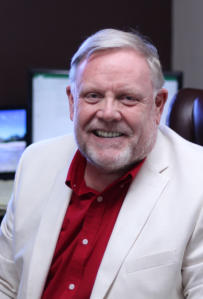Last week, I highlighted four major benefits of mission-driven ancillary programs. The final of those benefits was the opportunity to future leaders how to become barrier breakers.
I like to tell my students the story of Roger Bannister who ran the first sub-four-minute-mile and how this accomplishment was not his greatest accomplishment.
The story of the first sub-four-minute mile serves as a stepping stone to help our students break their barriers and realize that when they have a breakthrough personal performance, it is not just about them; they can inspire others to break through their barriers as well.
Strong leaders don’t accept and simply manage the status quo; they change things for the better.
The Roger Bannister Story
“Just a few decades ago, track-and-field experts arrogantly declared that no runner could break the four-minute-mile barrier. The experts argued that a human being couldn’t run that distance that fast. The “experts” conducted all sorts of profound studies to show why it was impossible to beat the four-minute barrier. They had very detailed scientific data at the time that indicated a sub-four-minute mile was physiologically impossible. And for years, the experts were right. Nobody ever ran a mile in less than four minutes.
But one day, a young runner came along who didn’t believe the experts’ opinions. He didn’t dwell on their studies about why it was impossible to break a sub-four-minute mile. He refused to let all the negative words and data points control his mind and spirit. Bannister did not surrender his thoughts and leadership to outside foes or forces.
The young man trained hard, believing he would break that record. Sure enough, he went out on a cloudy day in England and broke the four-minute mile barrier. He did what the experts said was impossible. Roger Bannister made his name that day in running history.
The Bigger Story
The bigger story behind the first sub-four-minute mile is what Bannister did for others. It wasn’t just about him. He inspired others to break through their barriers as well. By not giving up on his goal, he helped others in unimaginable ways.
Within about ten years after Roger Bannister broke that record, 336 other runners broke the four-minute mile as well! When you give up on your goals, you’re not just giving up on yourself. You’re robbing others of the opportunity to be inspired by what you’ve accomplished!
Wow! Something sure changed in the minds of the runners during that era.
Think about what Bannister accomplished for just a moment. For hundreds of years, as far back as we have records, nobody ran a mile in less than four minutes. Then more than three hundred people from various countries do it within about a decade.
What happened? It’s pretty straightforward. The barrier to running a four-minute mile was lodged in the runner’s minds and pierced into their hearts. For all those years, runners believed what the experts were saying. Most runners thought it was impossible to run a mile in less than four minutes.
Bannister was the one who believed sincerely that a sub-four-minute mile was possible. He overcame an incredible mental and emotional barrier that all runners had struggled with in the past. More importantly, he helped others break their long-standing barriers through his example.
We teach students never to underestimate the power of breaking their own long-standing personal barriers and how their example can positively impact those around them to break through their barriers as well. Becoming a barrier breaker in life is one central educational theme we try to instill in student-athletes.
On a practical level, our teams have become barrier breakers. They won the school’s first-ever state athletic championship, first-ever statewide athletic, academic championships, and several other “firsts” that opened the doors for others to follow.
Intentionally trying to break barriers for something greater than self is an incredible life skill to learn.
Our leaders of tomorrow need to know that “All things are possible through Christ who gives me strength,” as outlined in Philippians 4:13. Who knows, by learning how to have the confidence to break long-standing barriers early in life, maybe students will make discoveries in their future careers that more fully help and serve humanity.
Being intentional about breaking significant barriers in life can help others in unimaginable ways at first, similar to the Roger Bannister story. You can always do more than you initially believed.
As an ancillary service to the classroom, we can help teach and support leadership and barrier-breaking skills to our future Christian leaders in a learn-by-doing model.
Some Final Words
In summary, be strategic and intentional about how your ancillary services can support and encourage the fulfillment of your school’s vision and mission. By taking these services seriously, many kids will have more opportunities to move closer to their God-given potential, and your school will have additional ways to more fully reach and serve the surrounding community.
Use your ancillary services wisely for the betterment and long-term sustainability of your school and, more importantly, for the Glory of God.
If you would like to know more about the Mission, Goals, and Values of our running programs and track and field team, click here.
Blessings,
Coach Weber
Philippians 4:13

